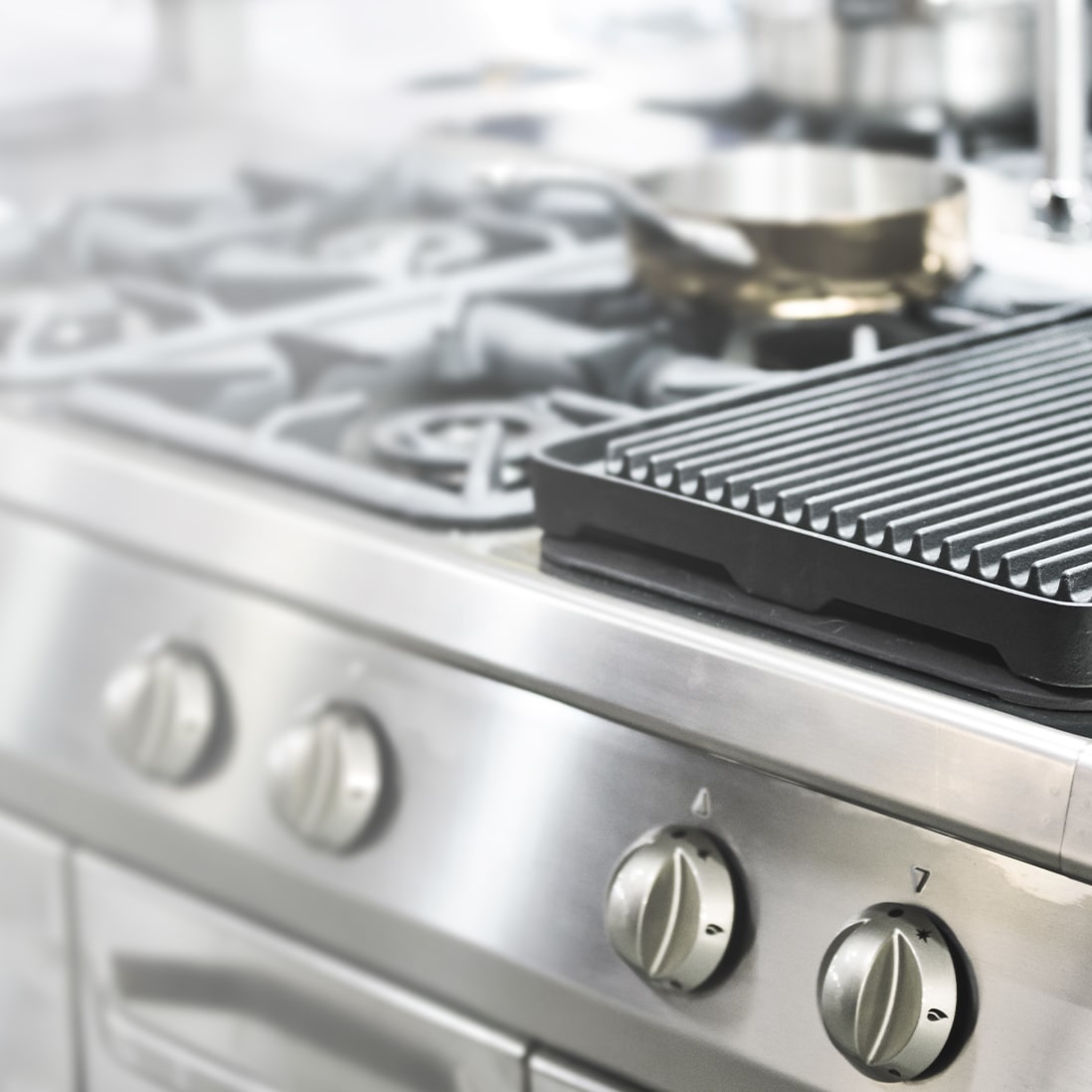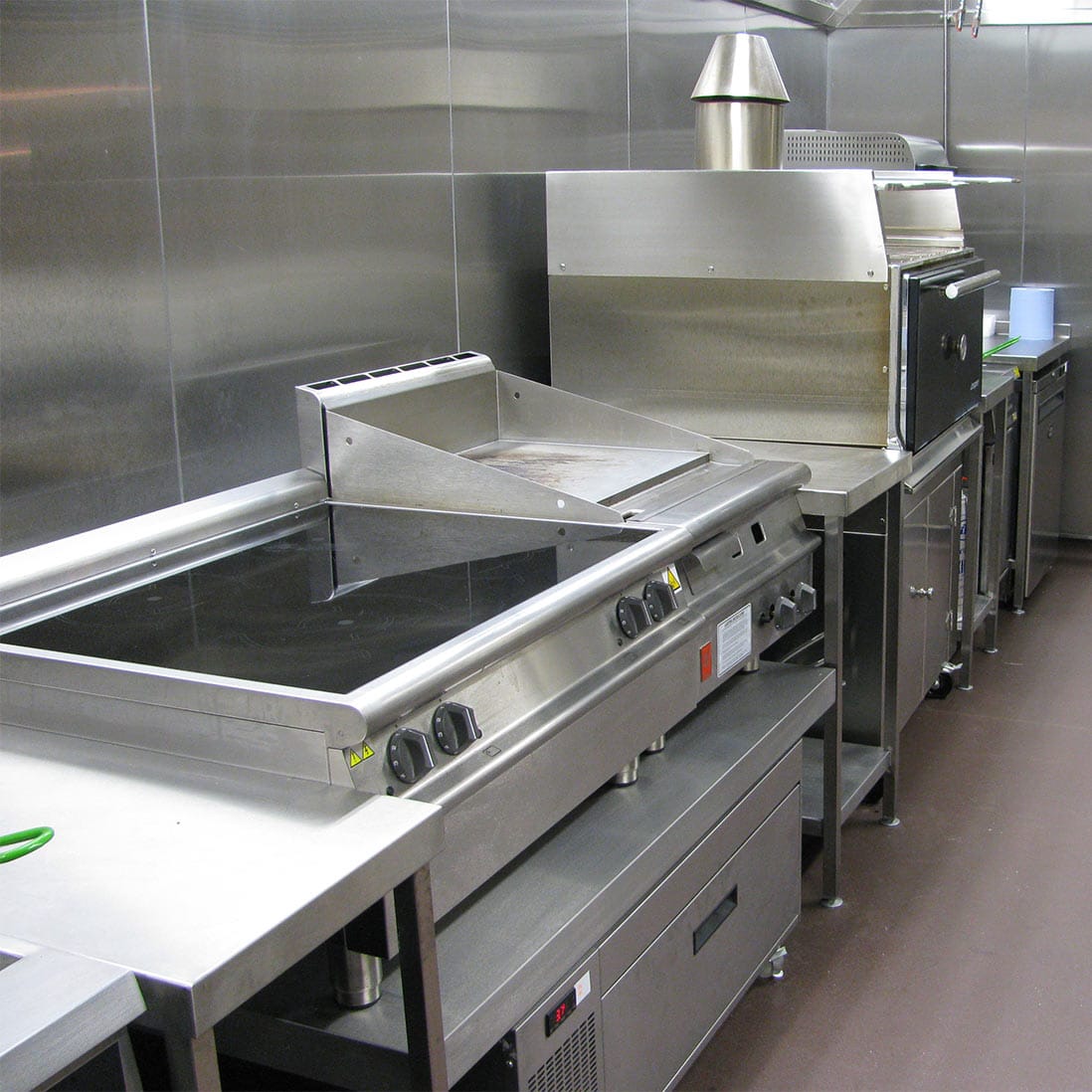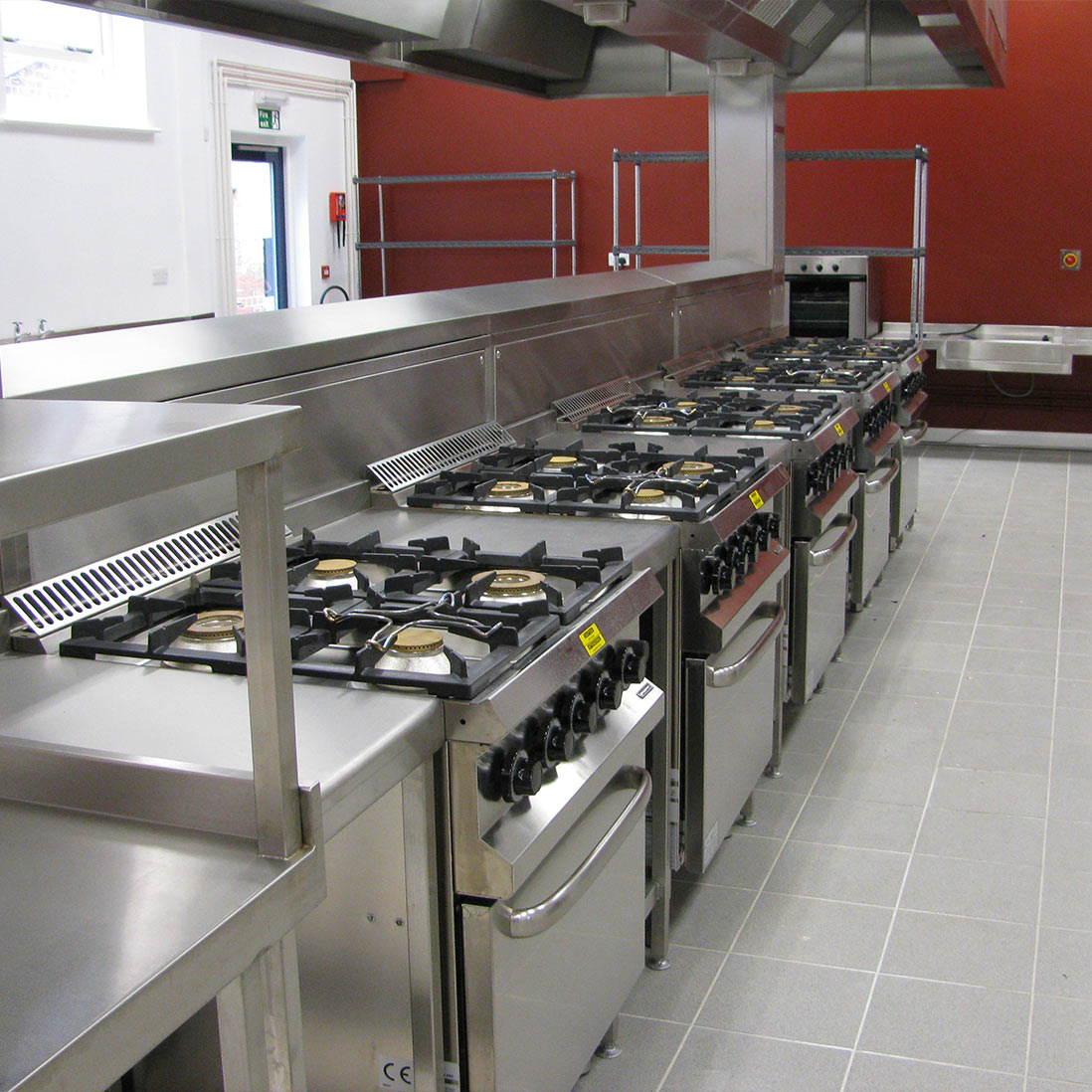Gas vs. Electric In Commercial Kitchens: The Pro’s and Con’s

This topic is debated by many, but it’s never been fully confirmed which option is best. Electric is a strong contender for being more economical but you need to review the pros and cons of both gas and electric, to find the best option for your commercial kitchen.
We’ve pulled out the pros and cons for each one, as well as some other considerations, to help you decide whether a gas or electric commercial kitchen is more suited to your business.
Electric equipment in commercial kitchens
Swapping to electric equipment might seem a little daunting, but for businesses looking at the future and sustainability of their kitchen, this may be the way forward.
The pros
- Electrical equipment is generally cheaper and easier to install. Although some equipment may need to be hardwired to your building’s supply, the majority of installations involve a plug and socket.
- With electricity, all the energy coming in is converted directly into heat, making it generally more efficient.
- Electric ovens tend to cook more evenly.
- Research suggests that less heat escapes from electric equipment, meaning a cooler kitchen, less energy wastage, and lower bills.
- Unlike gas there’s no danger of an electricity leak, releasing noxious fumes into your kitchen.
- Electrical equipment is easier to move from one location to another – you just need an electrical outlet.
The cons
- Electrical equipment can be affected by power outages.
- Bills can be costly depending on the operating costs in your area.
- Electrical ranges can take longer to heat up and seem more difficult to control the temperature, making them the less preferred option for many chefs.
- Electric provides a lower heat in general.

Sustainability and electric equipment
Another advantage is that electricity is considered more efficient and sustainable, compared to gas. It uses less fuel to achieve the same result and more energy is converted for use. Electricity doesn’t lose any energy like gas, making it more cost-effective.
Gas equipment in commercial kitchens
The main attraction to gas appliances is the ease of control, operational costs and the amount of heat they create per unit.
The pros
- Chefs have more control over the intensity of heat, using knobs to control the flame on each hob.
- You have instant heat as the flame ignites, reducing waiting time.
- It also extinguishes immediately when turned off, reducing cooling time.
- Due to the design on the hobs, the flames are spread-out, dispersing heat underneath and up the side of pans. Meaning they can cook faster and thoroughly.
- Gas appliances are rarely affected by power outages.
- Gas tends to have cheaper daily operational costs.
The cons
- Gas prices aren’t fixed and are currently (in 2021) quite high.
- As heat escapes from gas appliances, kitchens tend to get hotter and it costs more energy (and money) to keep them cool.
- Gas equipment tends to be more expensive due to installation costs and the equipment itself.
- You’ll need a gas supply to operate, which will increase your installation costs and potentially limit where equipment can sit.
- You’ll need a gas safe engineer and to follow gas regulations for
- installation and servicing, resulting in additional costs.
- Gas ranges are known to produce more heat but lose energy, making them less energy-efficient as well as creating a warmer, uncomfortable kitchen for staff.
- Gas equipment has a higher heat output which increases its cost.

Sustainability and gas equipment
Although there are a lot of advantages that come with a gas commercial kitchen, we also have to consider the process of obtaining and using gas. Being a natural occurrence under the Earth’s surface, gas needs to be extracted for use. However, similar to how gas ranges lose heat and energy, during the extraction phase, some of the gas, such as methane, is lost into the atmosphere. This damages our environment and contributes to global warming. Where we can reduce this impact, we encourage businesses to do so.
Factors to consider when choosing between gas or electric catering equipment
Now you’ve read through all the pro and cons, there are a few more questions to cover to help choose the best option for you:
- What time of day will you operate?
- Where is your operation located: city or rural?
- Will you need to move appliances around frequently?
- What is the price difference between gas and electricity currently, and how will this affect your bills?
- How long will it take your business to break even between gas or electric?
The future of powering kitchens
At INOX Equip, we are always looking at ways commercial kitchens can be more cost-effective and economical for you and the planet.
Looking to the future, the manufacturer Falcon has developed a range of equipment fuelled by hydrogen – providing an energy-efficient, low-carbon solution and a great complement for electric kitchen setups.
Finalising your decision
We understand that sometimes your equipment is determined by your kitchen setup, energy prices and budget. But by running through the pros and cons of both gas and electric kitchens, we believe that electric kitchens are the way forward.
When considering the costs, electric equipment and installation tends to be cheaper. It also makes for a cooler kitchen and has less impact on the environment. If you’d like to discuss your options further and how you can create a more sustainable commercial kitchen, please get in touch.

Share This: